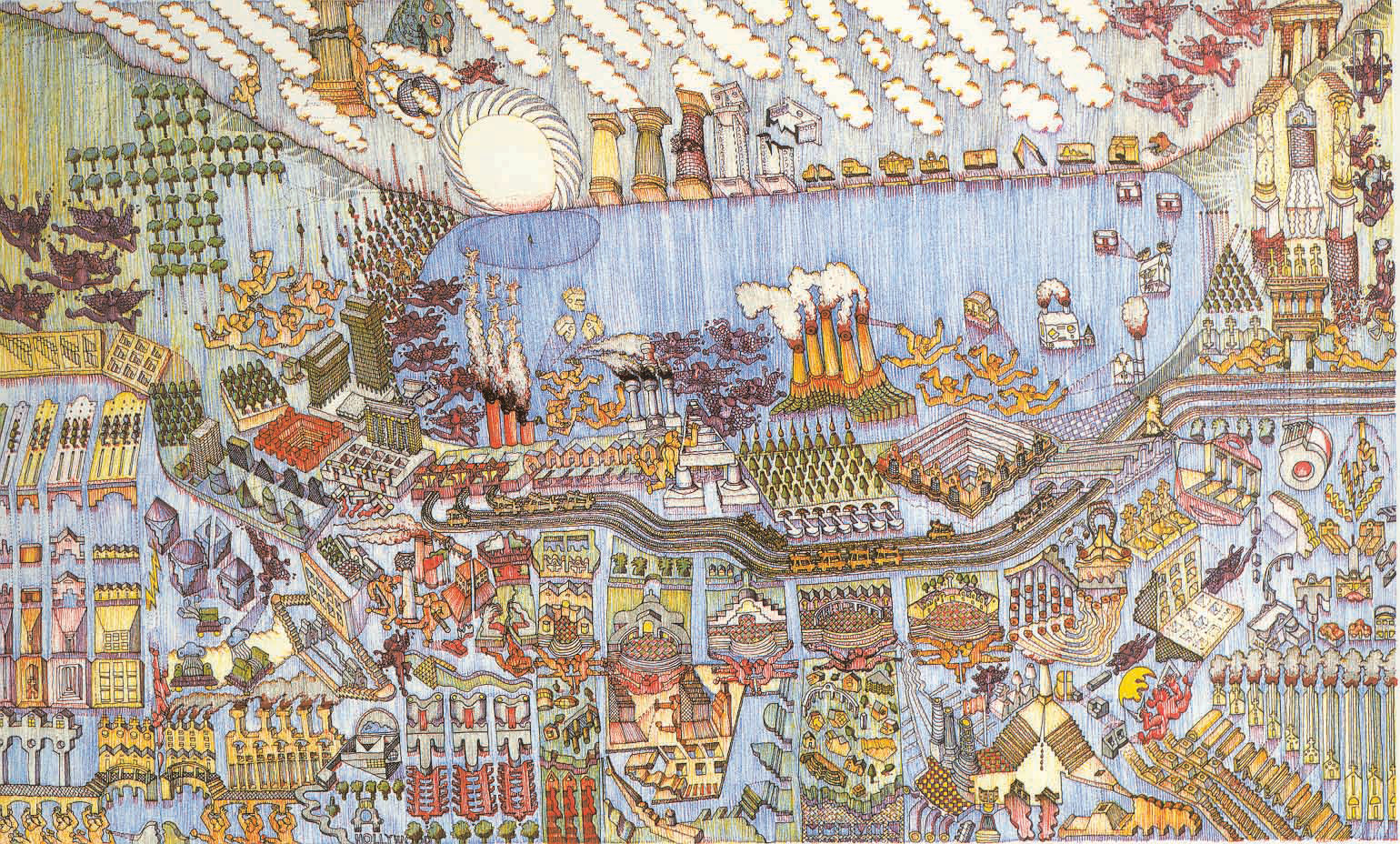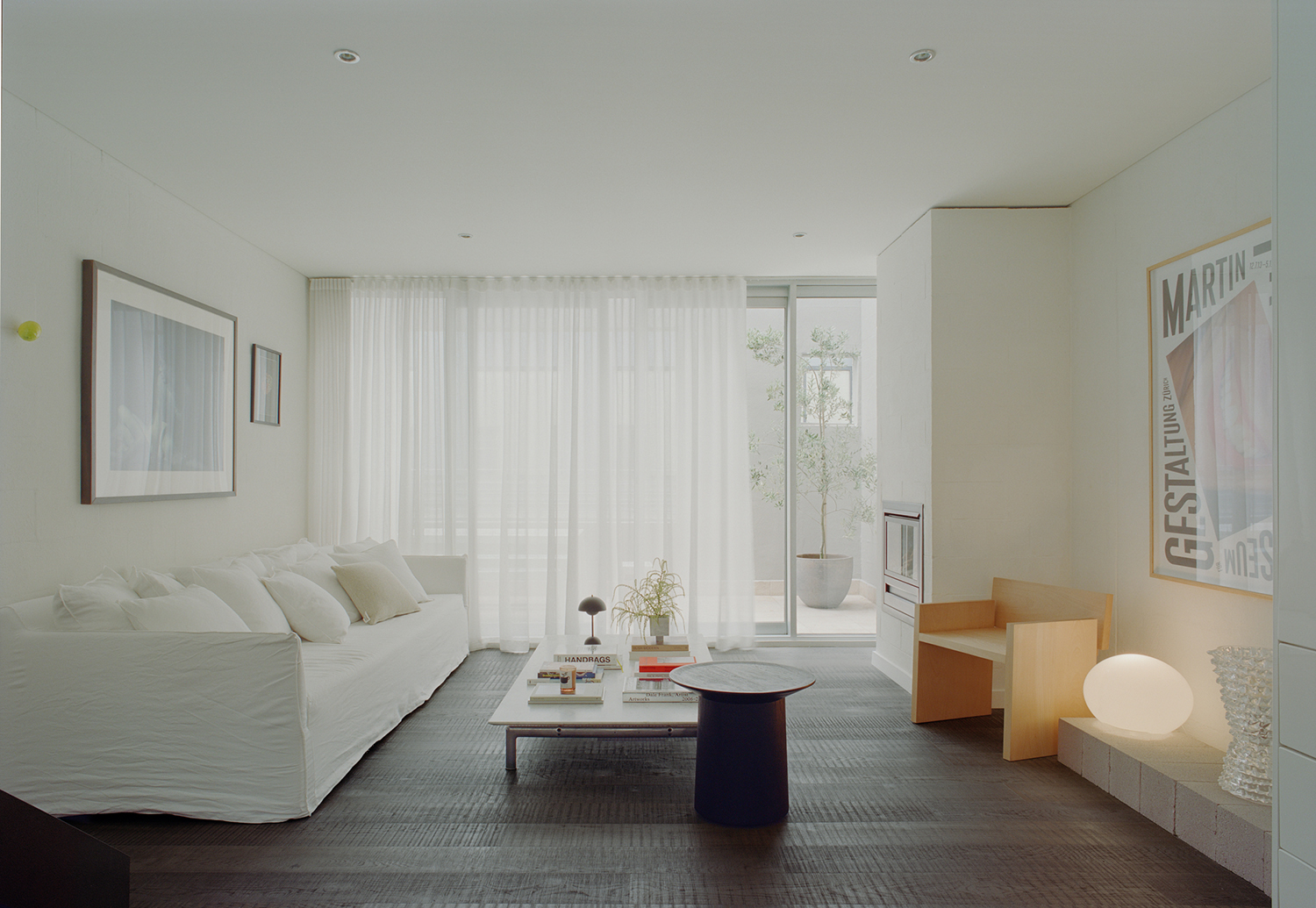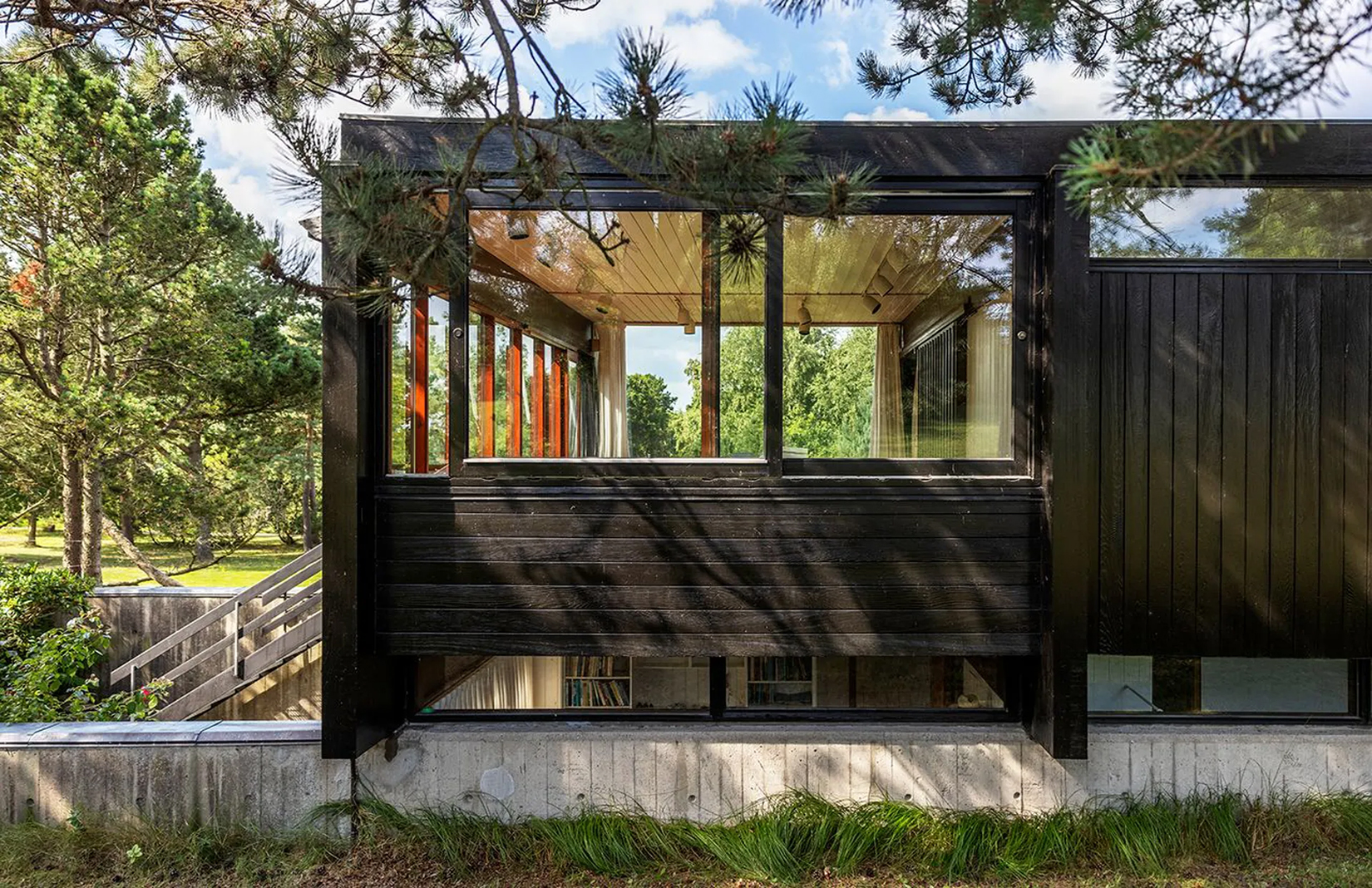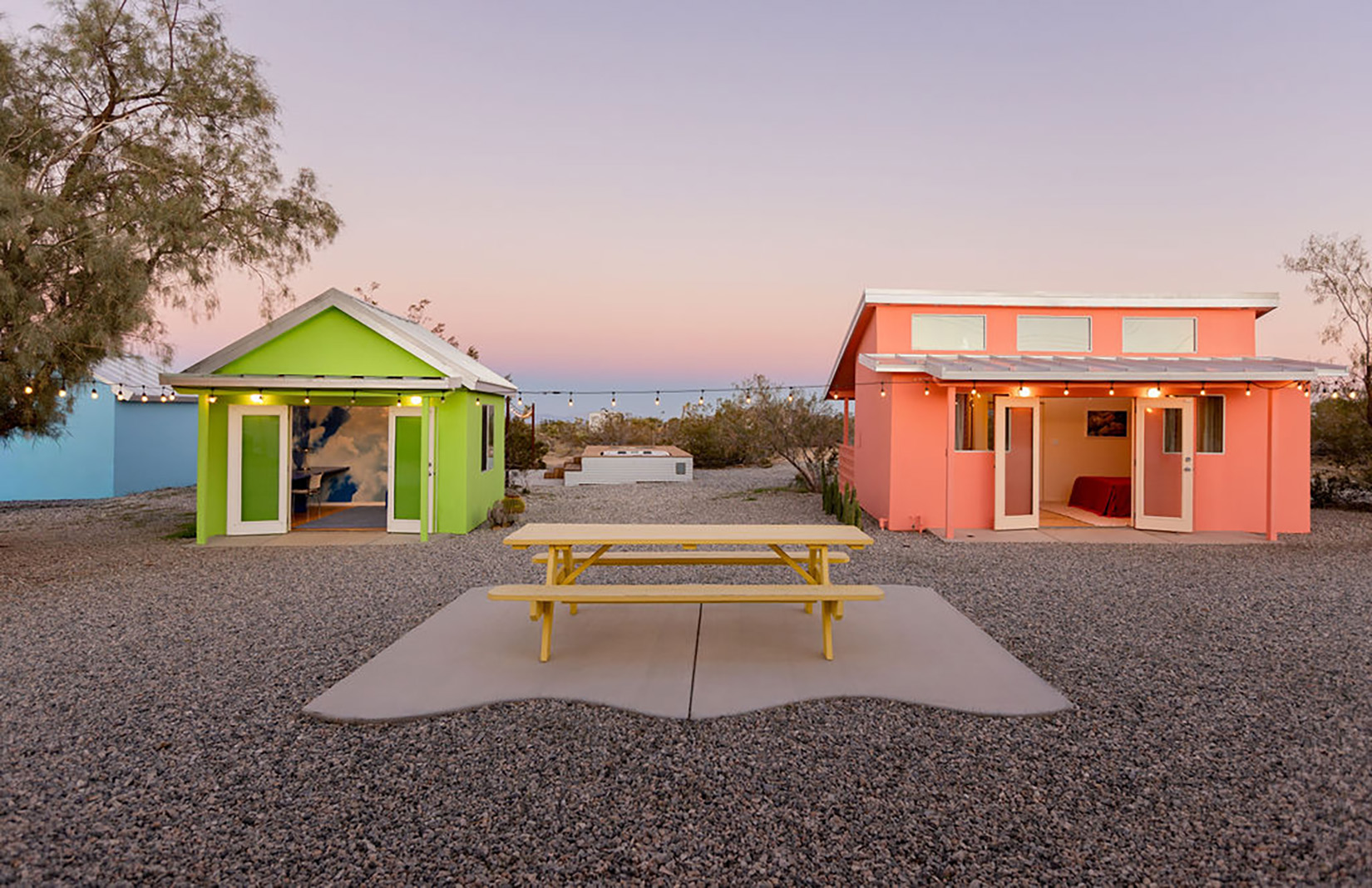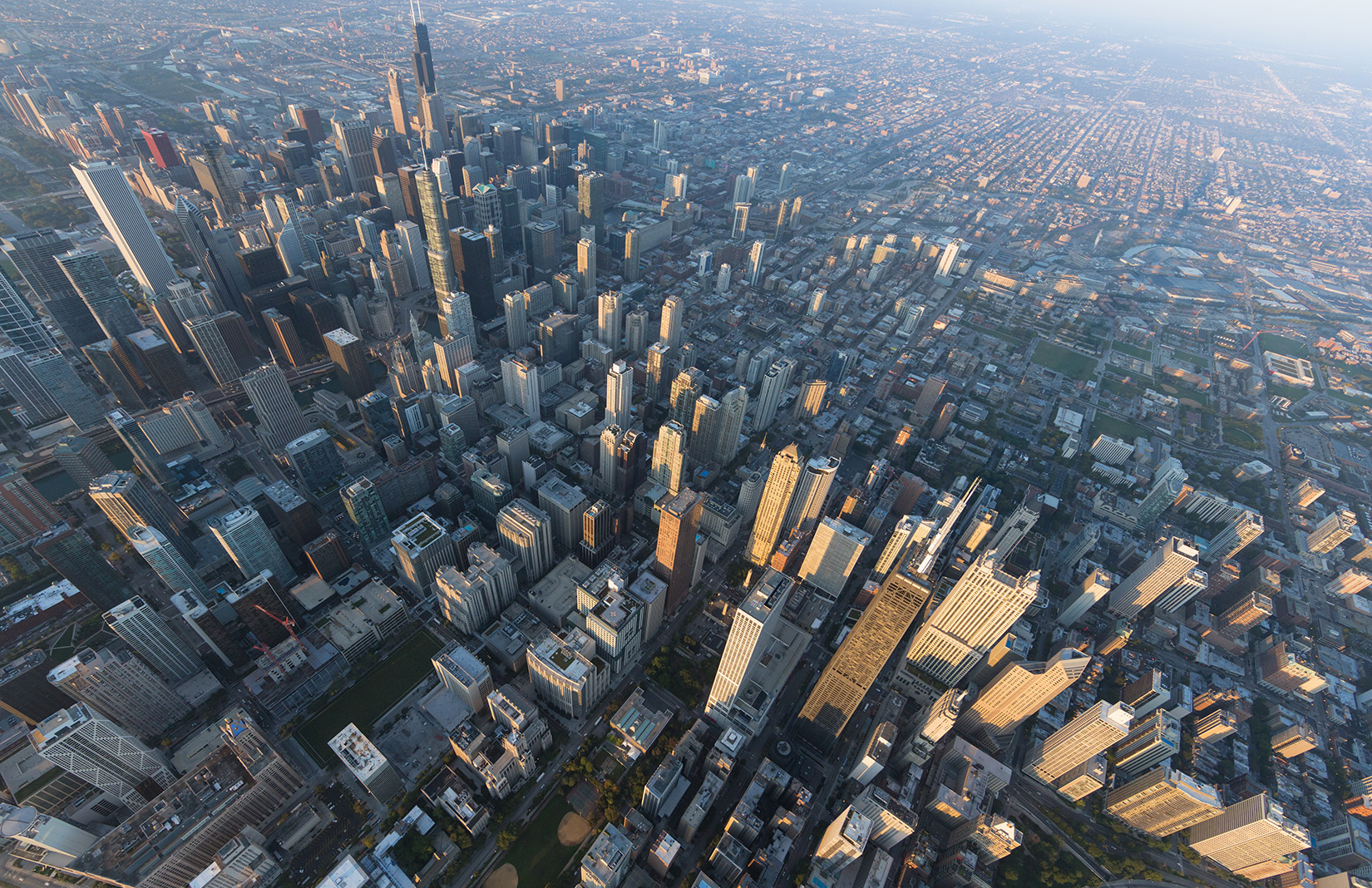
Over the next three months, architects and artists will be at play in Chicago. The inaugural Chicago Architecture Biennial — North America’s largest survey of international architecture — is a platform for spatial experiments, mirroring the architectural innovation for which the city is known. This is where the skyscraper got its start, after all. The Biennial will ask what innovations will come next and what will they look like.
The hub of the Biennial action is the Chicago Cultural Center, which will host a plethora of installations. Beyond this, we’ve selected 10 events not to miss, culled from hundreds of exhibits, talks, tours, and performances. If you’re in Chicago between now and 3 January, here’s your check-list.
Installation: Sara FitzSimons’s House
You don’t need an excuse to explore Chicago’s 20+ miles of public lakefront, but here’s one anyway. A life-size house made of aluminium poles and joints will stand for a month in the breakers at Ohio Street Beach. Minimally defined, it is still recognisable as a house. And it speaks hilariously to Chicagoans’ obsession with lakefront living. Runs until 26 October, Ohio Street Beach.
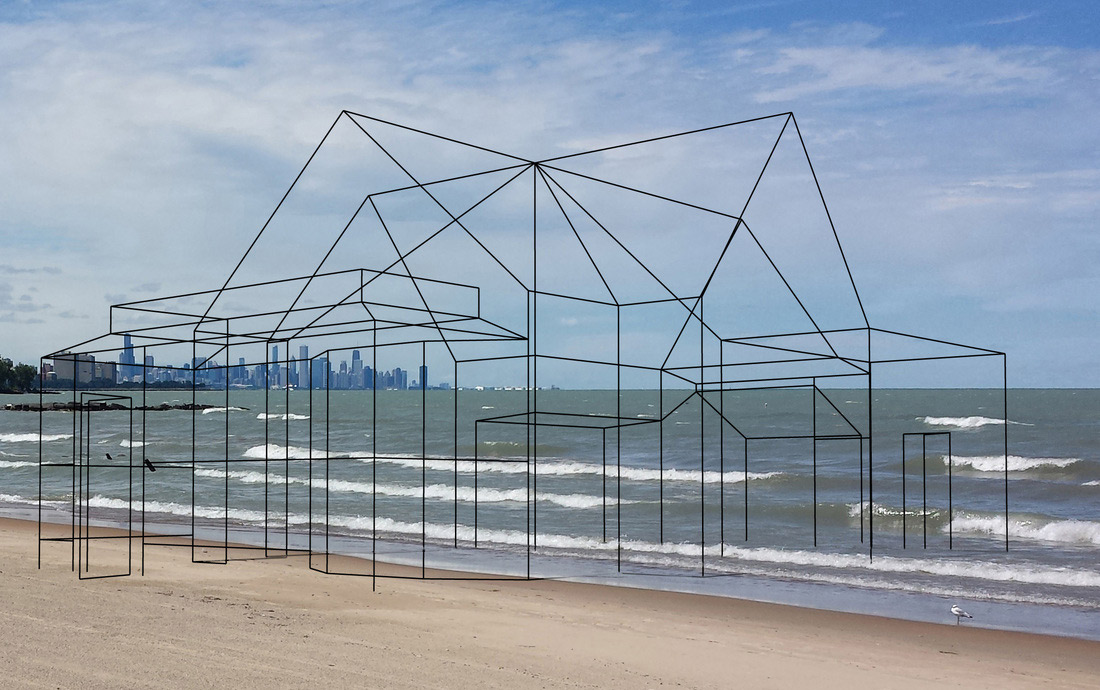
Exhibit: The Architecture of David Adjaye
The first comprehensive museum show of British architect David Adjaye’s work covers built projects around the world. Adjaye is known for his contextual and historical sensitivity, and the objects on display range from a monument to extinct species to sneaky and sublime London dwellings to city building in Qatar. Runs until 3 January 2016 at The Art Institute of Chicago
Exhibit: Lessons From Modernism
The suburbs have a small stake in the Biennial action, with one of the highlights taking place at Elmhurst Art Museum. The Cooper Union in New York has pulled together twenty-five building designs to make the case that important lessons in sustainability, not just ego, were advanced by architecture of the modernist era. Runs until 29 November 2015 at Elmhurst Art Museum.
Installation: Its Elemental
Adapting Rem Koolhaas’s 2014 Venice Architectural Biennale exhibition ‘The Elements of Architecture’ for the fine arts, 14 artistic collaborators tackle the fundamental elements of buildings – the floor, wall, ceiling, window, door, etc – at a dilapidated North Side mansion-cum-gallery.12-5pm, 2 October until 3 January at 6018North.
Performance: We Know How to Order
System of architecture, meet system of movement. When the South Shore Drill Team raids Ludwig Mies Van Der Rohe’s stoic Federal Center with military drills repurposed as street performance, onlookers will have a lot to process in a short time. What’s the correct way to occupy government space? And why doesn’t Mies want us to dance? Choreography by Asher Waldron, concept by Bryony Roberts. 5.30-5.45pm, 2 October at Federal Plaza.
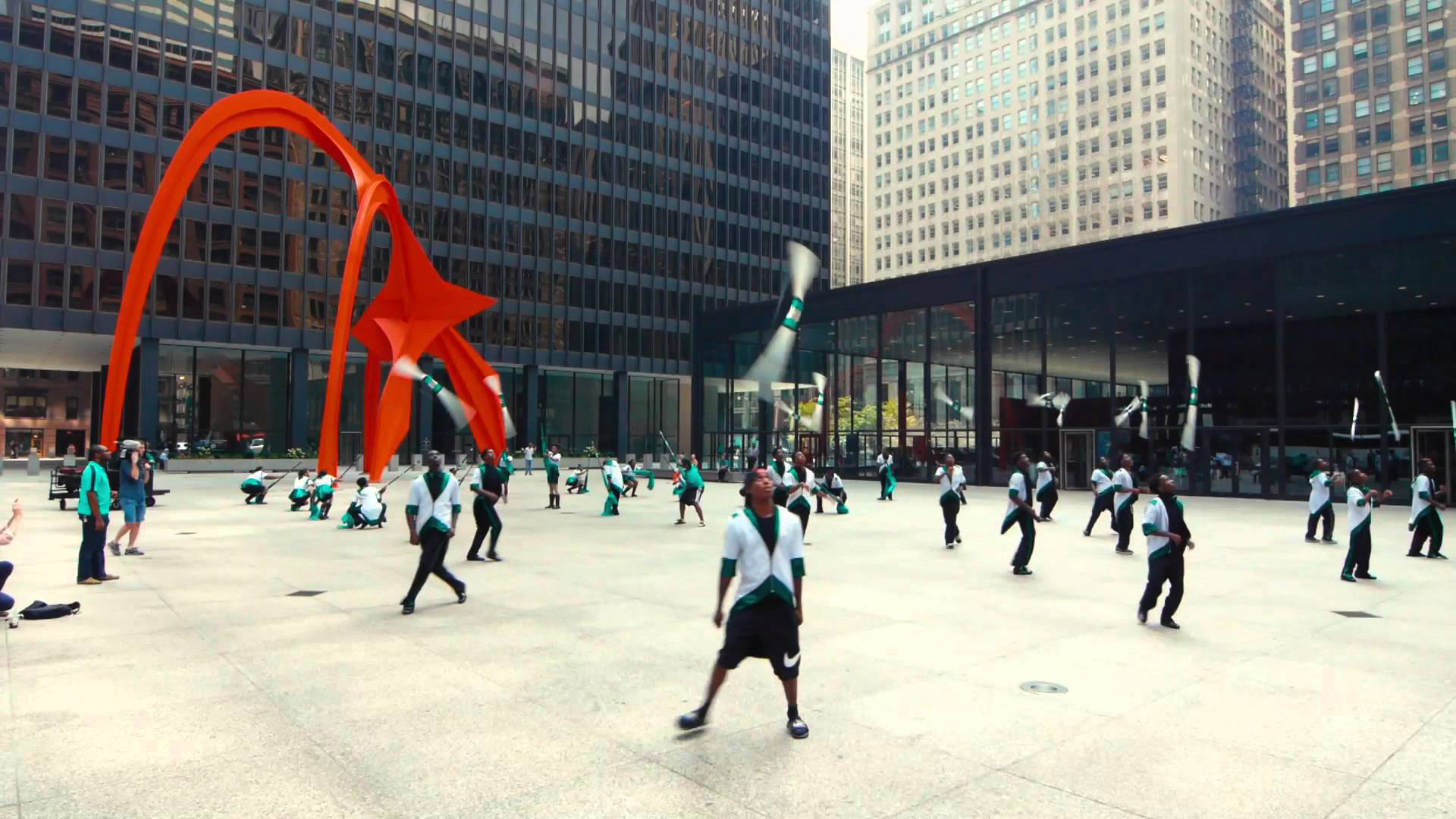
Exhibit: Carlos Bunga at Stony Island Arts Bank
Theaster Gates’ Stony Island Arts Bank – previewed last month – will be inaugurated by ‘Under the Skin’, a site specific installation from Portuguese artist Carlos Bunga. It headlines a series of events at the bank, including talks, film screenings and tours. 11am-6pm, 3 October – 3 January at Stony Island Arts Bank.
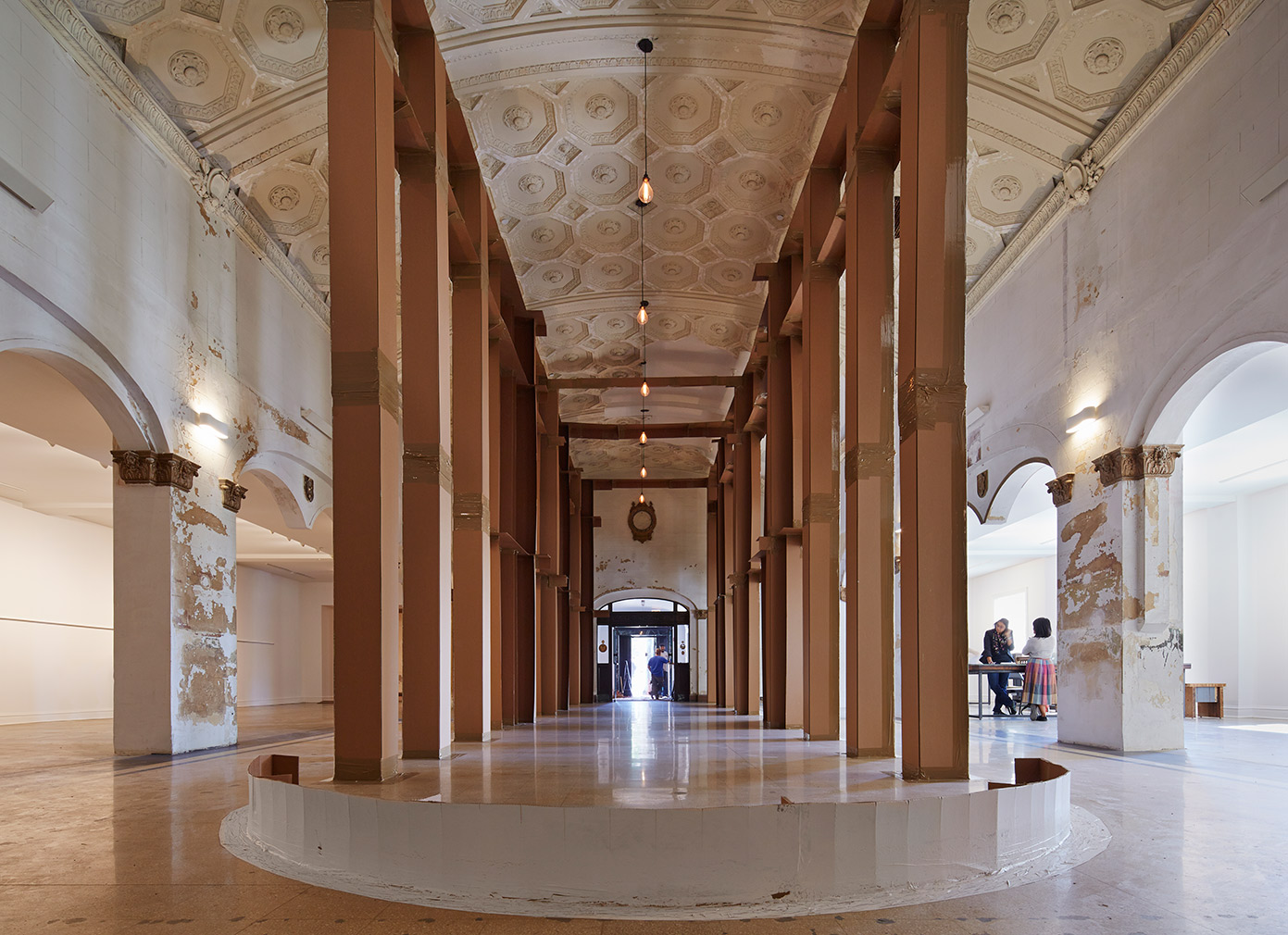
Talk: Reorienting the City
Chicago’s riff on the elevated rail trail, inspired by New York’s High Line, headlined a wave of new edgy parks and recreational spaces this year in Chicago. A panel of leading landscape architects and urban thinkers will ruminate on how such projects affect place and identity in the larger city. A walking tour of ‘The 606’ trail caps it off.
1-4pm, 3 October at Bucktown-Wicker Park Branch
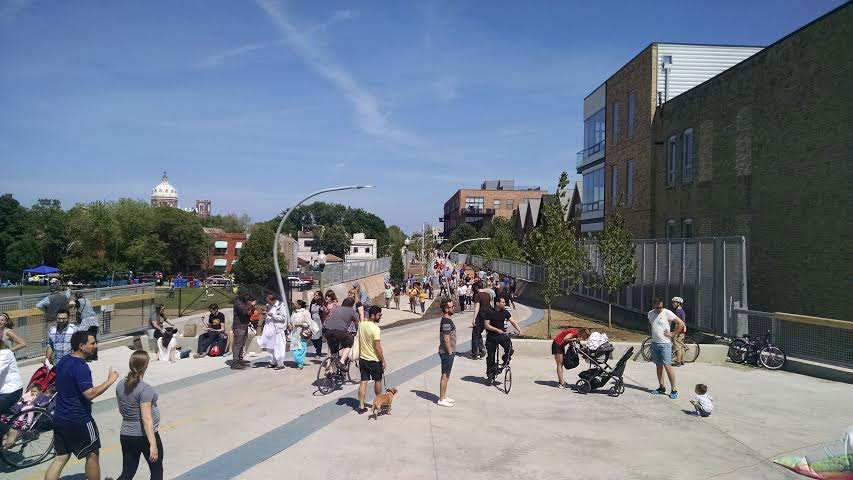
Tour: Frank Lloyd Wright Houses
Two of Frank Lloyd Wright’s seminal works are hitched together in this chauffeured tour. Bounce from Wright’s experimental and immaculately preserved Home and Studio in suburban Oak Park – site of some 20 homes by the American master – to his internationally renowned Robie House in Hyde Park on the city’s South Side, a restoration-in-progress. 12.15-5.45pm, 3 October at Chicago Cultural Center.
Talk: Before it was Hip – Adaptive Reuse in Black Chicago
Adapting structures by necessity not fashion has been a strength of marginalised groups in the city. Black Chicago is a great deal of Chicago, and no population has been so marginalised. Local historian and journalist Lee Bey presents examples of the many banks, factories, and warehouses that served successive communities in very different ways. 12-1.30pm, 15 October at the Auditorium Building.
Exhibit: 821 Stanley Tigerman Sketches
In 51 years of private practice, Chicago’s most rebellious modern architect Stanley Tigerman embraced absurdist forms while peers remained addicted to Miesian lines. His Hot Dog House abstracts the shape and colours of tube meat and condiment, and his Animal Crackers House is, well, a box of animal crackers. This exhibit collects Tigerman’s fantastically maniacal sketches and Architoons. 11am-6pm, 24 October until 5 December at Volume Gallery.
